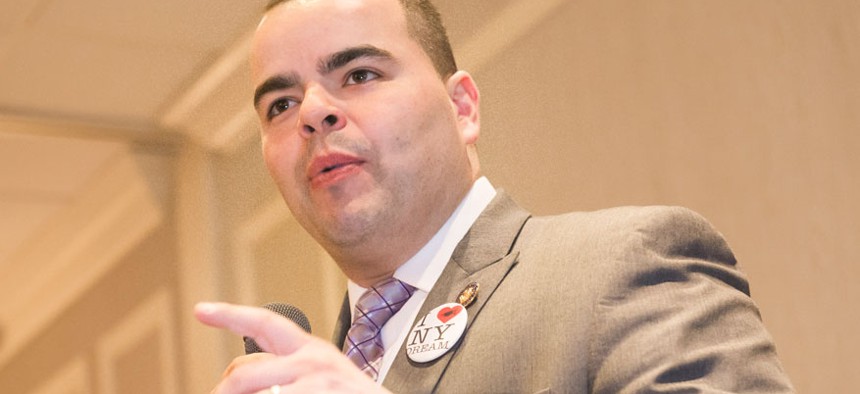Politics
Crespo: Gun violence is killing our children

A prominent observer of today’s society recently noted, “There is nothing worse than unemployable, frustrated youth.” While he was referring to a comparison of demographic factors shaping Asia and the Middle East, that inescapable truth also applies to the 70 percent of all gun violence deaths in the United States that is perpetrated by indigent young black and Hispanic males on young black and Hispanic males. In urban centers in America, gun violence is linked not only to race but to the socioeconomic status of our youth.
Recent and horrific episodes of gun violence have now forced us to confront such indisputable facts. Now is the time for our gun control measures to be focused on addressing the overwhelming gun violence in our cities. All across our nation, the proliferation of guns is a growing problem, and policymakers must bring to an end the killing fields many of our communities have become.
We must seize this opportunity and address the causes of minority youth violence. To highlight the devastation of this violence, a review of data compiled by the Children’s Defense Fund is necessary. It documented that between 1979 and 2009, 116,385 children died due to gun violence. Extrapolated to 2015 numbers, Americans have stood by and allowed over 134,000 children to die from gun violence; 47 percent of these children were African American.
More recent data tells us that over 28,000 children and teens were killed by guns between 2003 and 2014. In the two-year period from 2008 to 2009, 34,000 children and teens were injured by guns. This translates into one child injured by a gun every 31 minutes of those two years, equal to filling 1,375 classrooms of 25 students each. Today, one teen per hour is hospitalized due to gun violence in the United States.
There are solutions within our reach, and our society has the bureaucratic infrastructure in place to dramatically reduce gun violence. To achieve this goal, a sincere effort to help the communities most impacted by such violence is needed. For example, we already know that increased levels of education and income combined with functional after-school and youth programs are key factors in reducing violence and breaking down the astonishing sense of hopelessness that permeates the lives of youth in inner cities and urban centers.
Besides the loss of life, gun violence has other associated costs to our society and is traumatizing entire communities. For our health care system the costs are also very tangible: In New York between 2010 and 2013, almost $13 million was spent by our Medicaid program to cover public hospital costs for the treatment of over 1,840 gunshot victims. The impact on the mental health of families and communities impacted by gun violence is exponentially larger.
There is a tremendous need for successful youth programs and mental health services in African American and Latino communities where youth unemployment rates are as high as 50 percent; where schools fail to provide a nurturing educational setting; and where violence at home is as common as it is on the streets. We have in place an existing web of government-funded programs to address these ills. To stop gun violence, we must now expand and improve on these mechanisms that are focused on building minds and building communities.
This might be our best and last option to combat gun violence in a society where every year 4 million new handguns enter the market legally, with over 270 million firearms already in homes and on our streets.
Marcos Crespo is the chairman of the state Assembly’s Puerto Rican/Hispanic Task Force.

NEXT STORY: Crespo works to revive Hispanic task force’s legislative agenda